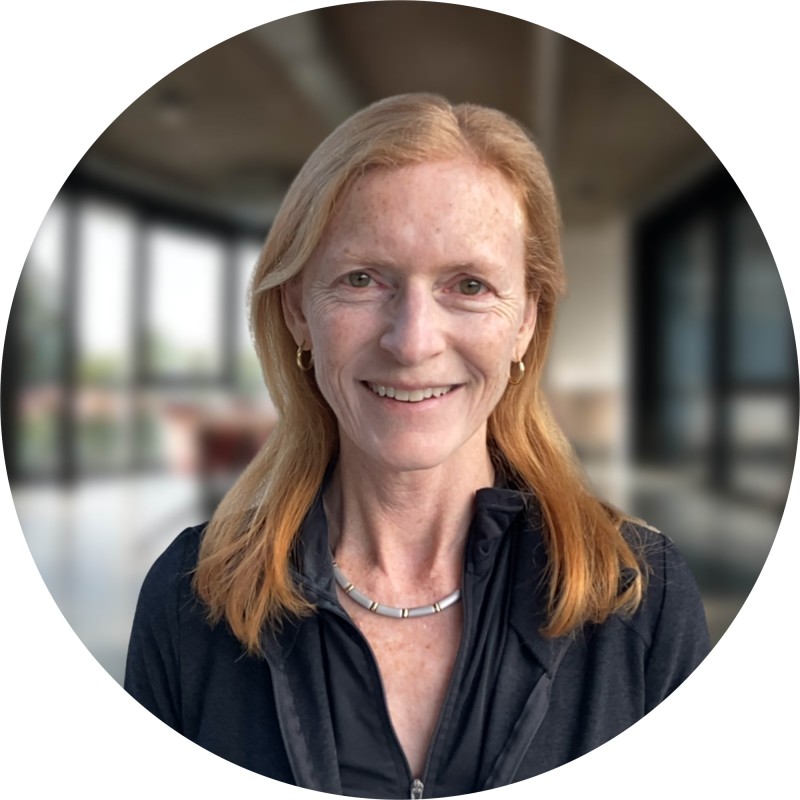When I moved back to the United States in 2002 after 14 years in Europe, I was shocked by how widespread poverty was. After 15 years working on climate policy and clean energy in developing and emerging markets, I didn’t expect to see homeless people, malnourished children, and families living out of cars here at home.
In 2016, over 44 million U.S. residents (14% of the population) had incomes below the federal poverty thresholds—ranging from 7.3% in New Hampshire to over 20% in Louisiana and Mississippi, and 43.5% in Puerto Rico [1]. And those thresholds are low: try living on $25,100 per year for a family of four.
Energy burden inequities
Energy costs that wealthier households take for granted create a real burden for low- and moderate-income families. Households earning $20k–$39k spend about 4% of income on energy; those under $20k spend over 7%—and together these segments represent 42% of U.S. households [2].
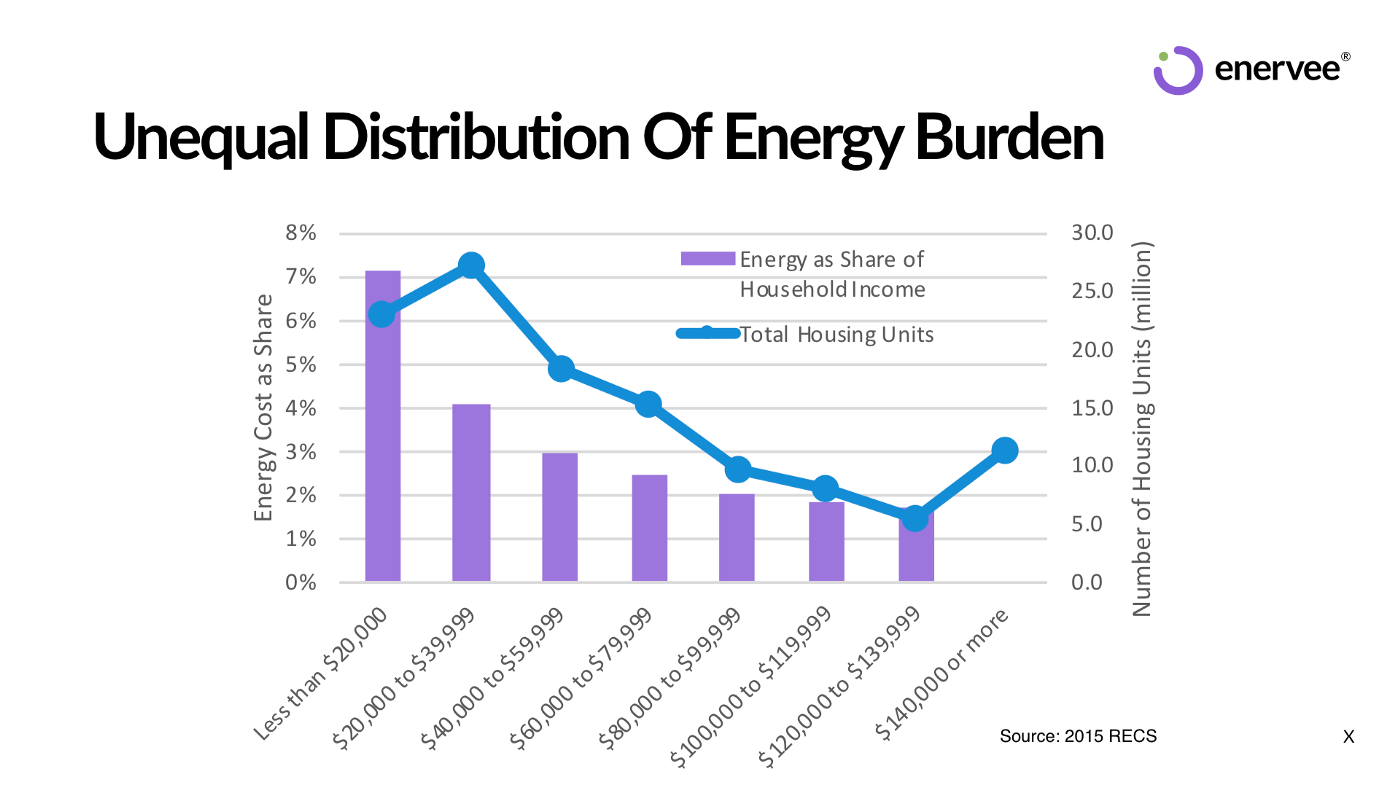
It’s no surprise that nearly one-third of U.S. households (31%) reported difficulty paying energy bills or maintaining adequate heating/cooling in 2015—across regions and urban/rural areas alike [3].
People living in apartments and mobile homes also tend to pay more for cooling because they rely on window A/C, which is typically less efficient than central systems. In the Gulf Coast and coastal Carolinas, households using window units paid more than 2× per square foot cooled versus homes with central A/C [4].
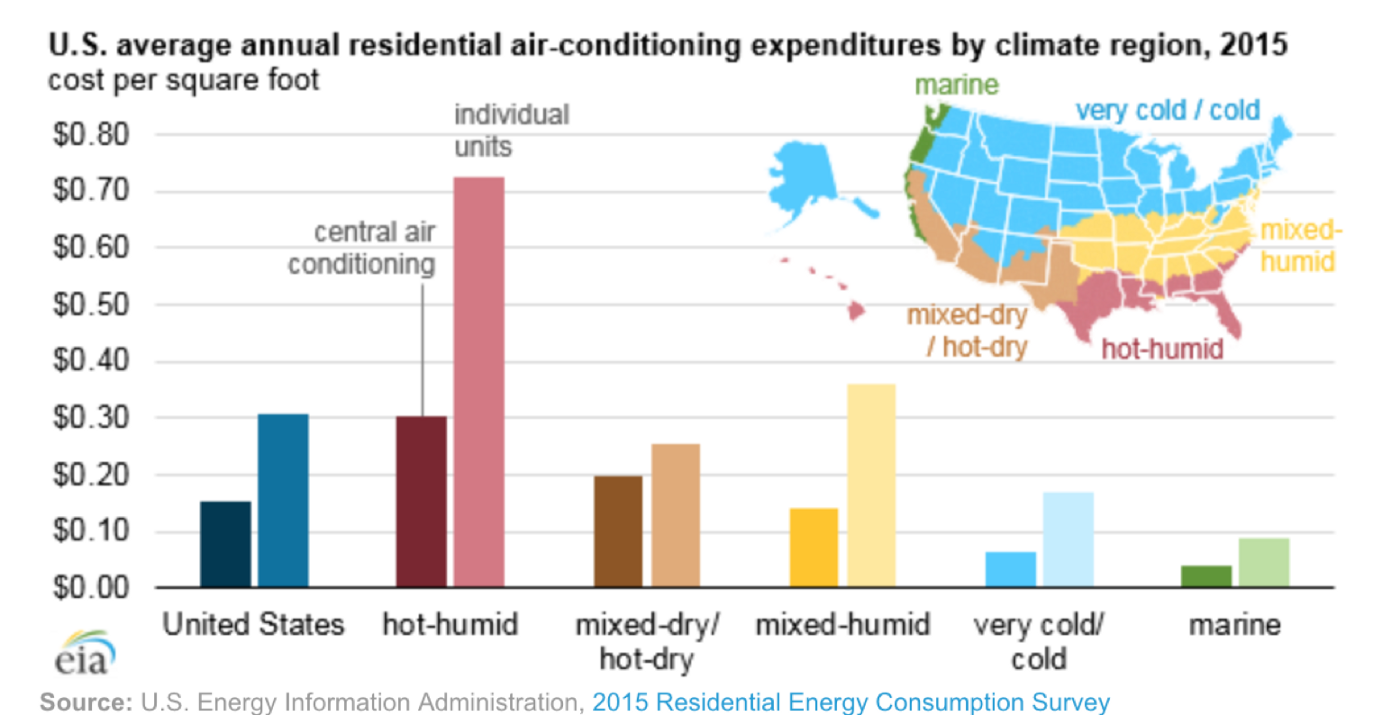
Climate change can make things worse
The California Energy Commission found rising temperatures are expected to deepen economic burdens, especially for low-income communities in Southern California [5]. In more than 140 low-income tracts in SCE territory, the average August bill in 2014 exceeded $300 (vs. $157 overall). Many San Joaquin Valley communities already face high asthma ER visits and heat-related illness—risks that increase with hotter weather.
Inclusive & innovative energy efficiency
Done right, efficiency can be a boon for low-income households and disadvantaged communities—lower bills, improved health, and local jobs. Our contribution to the 2018 ACEEE Summer Study proposed expanding retail product efficiency programs so income-constrained households and building owners can buy the most efficient products to keep bills down.
With income-constrained households already conserving (short showers, lights off), one of the biggest levers to reduce energy burden is ensuring one-time product purchases are as efficient as possible.
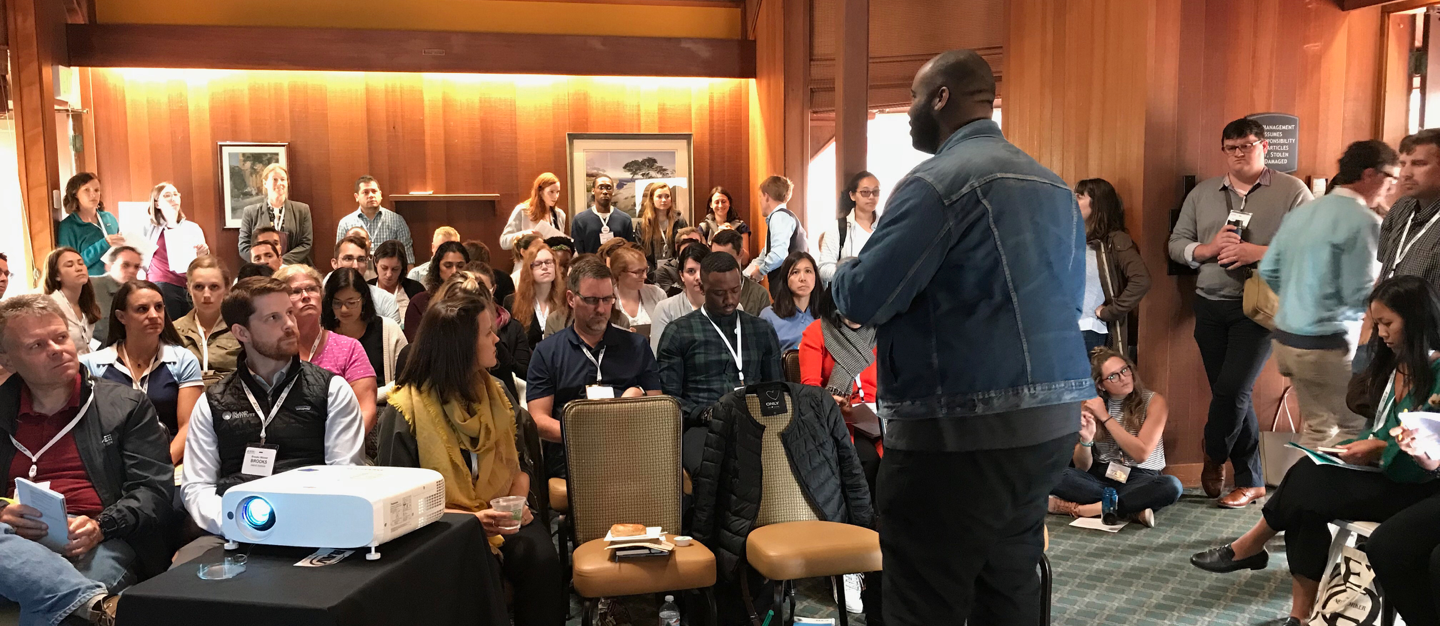
Moderated by Charles Taylor (One Voice Jackson), the session included case studies from coastal Maine (Island Institute) and results on inclusive financing models (Holmes Hummel) that deliver returns while benefiting all customers.
Status quo & fresh approaches for plug loads
Traditional “low-income programs” often rely on bill subsidies or direct-install at no cost to the household. Common shortcomings include:
- Limited plug load category coverage;
- High cost per kWh saved (>$1/kWh) with limited scale;
- Failure to address the up-front purchase barrier that prevents efficient buying.
Many residential rebates also don’t solve the up-front cost challenge, and regulatory constraints can limit plug-load programs. That’s why some jurisdictions (e.g., New York) are shifting from direct financial assistance to innovative affordability strategies that address root causes [6].
Appliances and electronics that plug into outlets are a major part of the bill—roughly one-third of residential energy use (excluding lighting).
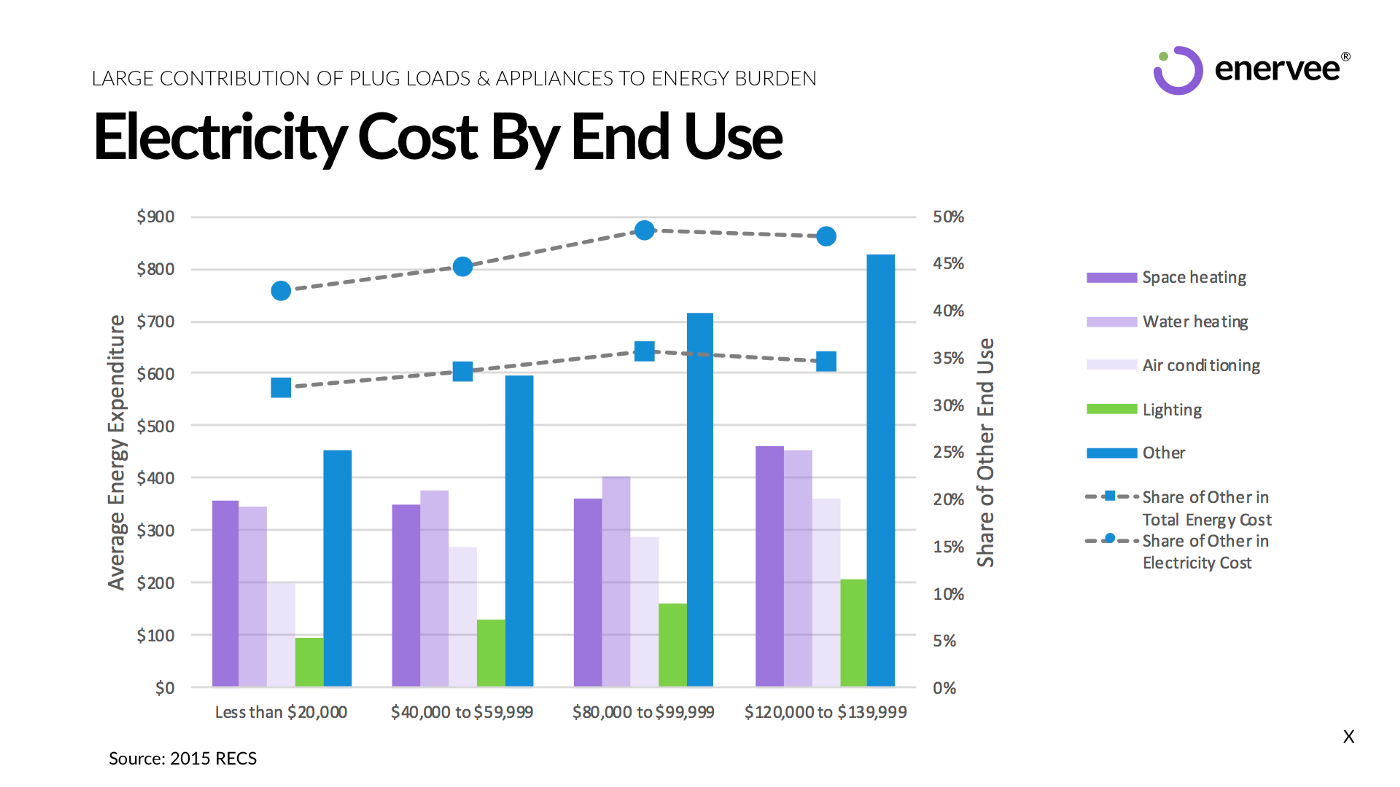
The California Energy Commission specifically calls for ensuring “low-income persons have product selection options and information necessary to avoid driving up plug-load energy use” [7]. Empowering low-income customers to buy efficient products is a conceptual shift from rate discounts and direct-install—one that can benefit all ratepayers.
A retail product approach that can pay for itself
Online utility marketplaces can scale this strategy:
- Enervee Score® (0–100) helps shoppers pick efficient models that don’t cost more—driving private investment without incentives.
- Targeted instant incentives for super-efficient products (e.g., Score 90+) can be delivered at checkout—online or in-store—to overcome up-front cost barriers.
TVs are a good example: no incremental cost for efficiency, yet a 3× spread in consumption among ENERGY STAR models. Targeting incentives to the top performers maximizes savings and equity.
An indicative $1M targeted incentive in California could (per our paper’s assumptions):
- Offset program costs via $1,004,213 in avoided low-income bill subsidies;
- Deliver 10,670 MWh lifetime electricity savings;
- Generate $1,457,560 in participant bill savings;
- Avoid $1,280,340 in system energy costs.
Treat a root cause—inefficient products—at no net cost to ratepayers, instead of perpetually subsidizing high bills.
Enervee’s instant, point-of-sale discount technology (for income-qualified customers) supports dynamic eligibility, omnichannel fulfillment, and reporting—while preserving user choice rather than narrowing the catalog.
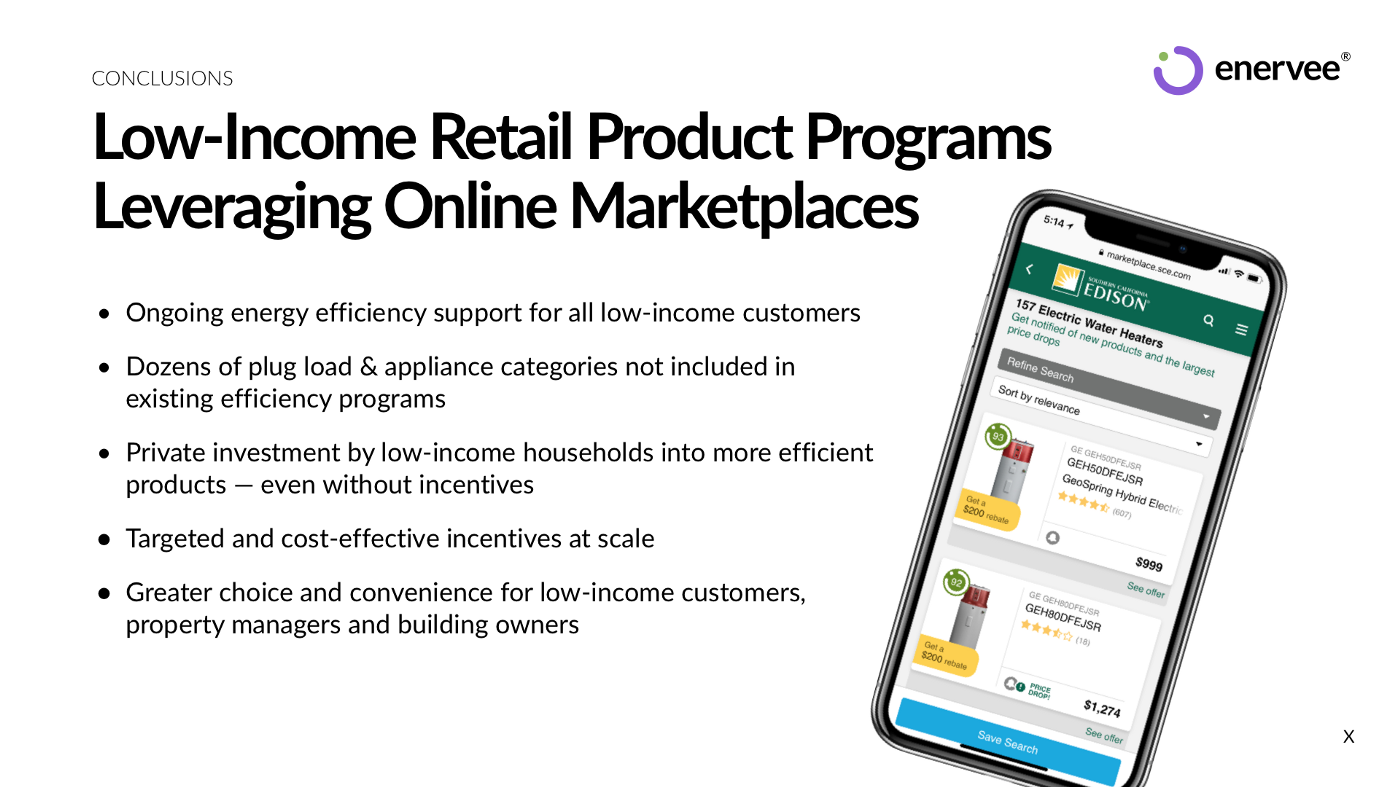
If you’d like the full methodology and assumptions, download the ACEEE Summer Study paper.
Across the week, equity & efficiency discussions were as much about economic opportunity and energy democracy as about kWh. To maximize impact, partnerships matter—across utilities, community organizations, and technology providers.
References
[1] U.S. Census Bureau (2016) — Poverty thresholds & rates.
[2] Residential energy expenditures by income segments.
[3] Household Energy Insecurity, 2015 survey results.
[4] AC costs per sq ft: window A/C vs. central A/C in hot-humid regions.
[5] California Energy Commission analysis of rising temperatures & bills.
[6] NY commitment to innovative affordability beyond direct aid.
[7] CEC guidance on plug-load information & product selection for low-income households.
